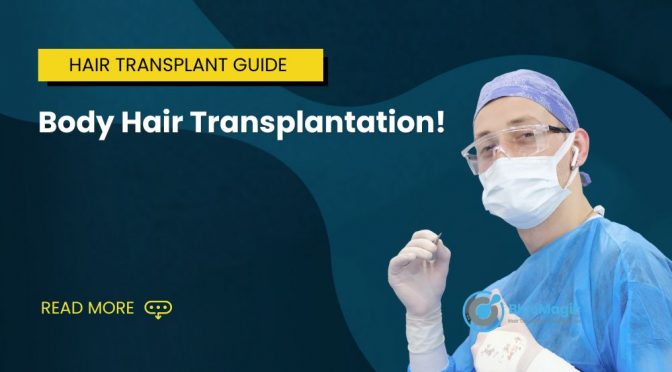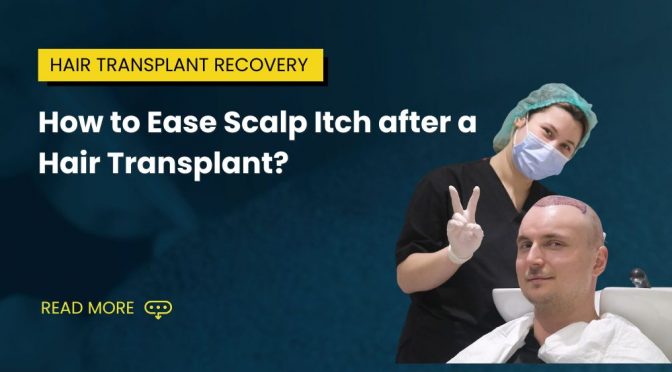Understanding Body Hair Transplantation
Body Hair Transplantation (BHT) is a hair restoration procedure that involves extracting hair follicles from various parts of the body, such as the chest, beard, arms, legs, or back, and transplanting them onto the scalp. This technique is particularly useful for individuals who have experienced significant hair loss due to genetics, traction, trauma, or other factors. Body hair transplantation can help restore hair in areas where existing hair has become thin or even bald.
Indications for Body Hair Transplantation to the Scalp
Body hair transplantation is typically recommended in the following scenarios:
- Limited scalp donor supply: When there is not enough scalp donor hair available to provide the desired coverage in areas of the scalp affected by hair loss, body hair can be used as an alternative.
- Previous hair restoration surgeries: Individuals who have previously undergone hair restoration surgeries and have depleted their scalp donor areas may benefit from body hair transplantation to achieve additional coverage in the recipient areas.
- Scar camouflage: Body hair transplantation can be used to conceal scars from previous hair transplant procedures or other scalp injuries, providing a more natural appearance.
- Extensive scarring alopecia: In cases of extensive scarring alopecia, where the scalp donor area is insufficient, body hair can be utilized to restore hair in the affected areas.
It’s important to consult with a hair restoration surgeon to determine if you are an ideal candidate for body hair transplantation and to discuss the expected outcomes based on your specific needs and circumstances. You can book a free hair transplant consultation with our specialized team and discuss your best options.
Different Types of Hair on Our Bodies
Our bodies have various types of hair, each with its own characteristics. Understanding the differences between scalp hair and body hair is crucial when considering body hair transplantation. Here are the different types of hair found on our bodies:
- Scalp hair: The hair on our heads, which grows from birth and typically has a longer growth cycle and a higher density compared to body hair.
- Beard hair: Hair that grows on the face and neck of men. Beard hair is often coarser and thicker than scalp hair.
- Chest hair: Hair that grows on the chest area, which can vary in thickness and density among individuals.
- Arm hair: Hair that grows on the arms, typically finer and shorter than scalp hair.
- Leg hair: Hair that grows on the legs, usually thinner and shorter than scalp hair.
- Back hair: Hair that grows on the back, which can range from thin and fine to thick and coarse.
Each type of hair on our bodies has its own growth cycle, texture, and length, which can impact its suitability for transplantation.
Distinguishing Body Hair from Scalp Hair
Body hair differs from scalp hair in several ways, including texture, length, and growth cycle. While scalp hair tends to be softer, longer, and grows at a slower rate, body hair often has a more wiry or curly texture, shorter length, and a faster growth rate. Body hair also tends to have a different diameter and pigmentation compared to scalp hair. Additionally, body hair is typically shorter, with most hairs measuring between 1-3 cm in length. These differences in characteristics should be considered when evaluating the feasibility of body hair transplantation to the scalp.
Ideal Candidates for Body Hair Transplantation
The ideal candidates for body hair transplantation are individuals who have significant hair loss and limited scalp donor supply. Candidates must also have sufficient body hair available for transplantation, with hair characteristics that can provide a natural appearance on the scalp. It’s essential for individuals considering body hair transplantation to have realistic expectations regarding the texture, thickness, and growth rate of transplanted body hair, as it may differ from their existing scalp hair.
The Method Used for Body Hair Transplantation
The method used for body hair transplantation is similar to other types of hair transplant procedures, primarily employing the follicular unit extraction (FUE) technique. Here is an overview of the process:
- Donor hair harvesting: The first step involves harvesting hair follicles from the body, typically from areas such as the beard or chest. The FUE method is commonly used for body hair transplantation, as it allows for the extraction of individual follicular units without leaving a linear scar.
- Graft preparation: Once the donor hair is harvested, the follicular units are carefully prepared for transplantation. This involves separating the individual hair grafts and ensuring their viability for transplantation.
- Recipient site creation: The surgeon creates tiny incisions in the recipient area of the scalp, where the transplanted hair follicles will be placed. The placement of these recipient sites is crucial for achieving a natural-looking result.
- Graft transplantation: The prepared hair grafts are then meticulously transplanted into the recipient sites, taking into account the desired hairline design and overall aesthetic goals. The surgeon ensures that the transplanted hair follicles are positioned at the correct angle and depth for optimal growth.
- Post-transplant care: After the procedure, the patient will receive detailed instructions on post-transplant care, including proper cleansing, medication, and follow-up appointments. It’s important to follow these instructions to promote healing and optimize the results of the transplantation.
Limitations of Body Hair Transplantation to the Scalp
While it can be an effective solution for individuals with limited scalp donor supply, there are certain limitations to consider. These limitations include:
- Texture and appearance: Body hair may not perfectly match the texture, diameter, and colour of scalp hair, which can result in a less natural-looking outcome.
- Coverage per graft: Body hair tends to provide less coverage per graft compared to scalp hair, requiring a larger number of grafts for adequate coverage.
- Growth rate and shedding: Transplanted body hair may not grow at the same rate as surrounding scalp hair, and body hair generally has a higher tendency to shed more frequently.
- Quantity and quality of body hair: Not all individuals have sufficient body hair available for transplantation, and the characteristics of body hair may vary, making it less suitable for transplantation in some cases.
Despite these limitations, body hair transplantation can still offer significant improvements in hair coverage and aesthetic outcomes, particularly when combined with traditional scalp donor hair transplantation.
Benefits of Body Hair Transplantation to the Scalp
Body hair transplantation offers several potential benefits for individuals with limited scalp donor supply. These benefits include:
- Scalp coverage: Body hair can provide additional donor follicles, allowing for more extensive coverage in areas of the scalp affected by hair loss.
- Combination with scalp donor hair: Body hair transplantation can be used in combination with scalp donor hair to achieve a higher density and more comprehensive coverage of the scalp.
- Camouflage of scars: Body hair transplantation can effectively conceal scars from previous hair transplant procedures or other scalp injuries, improving the overall appearance of the scalp.
- Extended treatment options: By utilizing body hair as a donor source, individuals who have exhausted their scalp donor supply can still pursue hair restoration treatments.
It’s important to consult with a qualified hair restoration surgeon to determine if body hair transplantation is a suitable option for your specific case and to discuss the potential benefits and limitations based on your individual needs.
Can It Provide Full Coverage?
While hair transplant procedures, can significantly improve hair coverage, it’s important to have realistic expectations regarding the extent of coverage that can be achieved. Complete coverage of the entire head may not be possible in all cases, especially in individuals with extensive hair loss or limited donor supply. However, hair transplant procedures can provide substantial improvement in hair density and overall appearance, helping individuals regain a more natural and fuller head of hair.
Conclusion
Hair loss can have a significant impact on a person’s self-esteem and overall well-being. When traditional methods of hair restoration are insufficient, body hair transplantation can be a viable option for individuals with limited scalp donor supply. By utilizing hair follicles from other parts of the body, such as the chest or beard, hair transplant surgeons can provide enhanced coverage and aesthetic outcomes. It’s important to consult with a qualified hair restoration surgeon to determine if this method is suitable for your specific case and to discuss the potential benefits, limitations, and expected results based on your individual needs. With advancements in technology and surgical techniques, body hair transplantation continues to offer hope for individuals seeking a long-term solution to their hair loss concerns.

